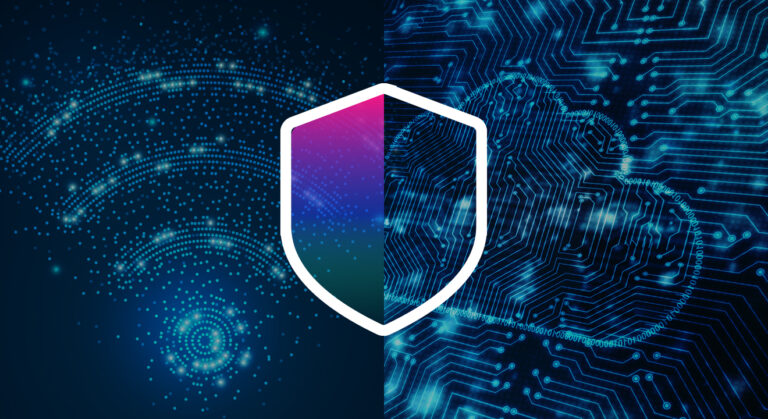It’s no longer just about speeds and feeds in order to create meaningful customer offerings — adding value related to digital safety is key to growing your business.
You already know that including digital security into a service offering is no longer a nice-to-have for ISPs. What’s more, the growing activity worldwide to enact stricter security guidelines for consumer and low-tier SMB IoT devices will put more pressure on service providers. But how can you successfully go about selling this service to end users who may not realize that their IoT devices could be used for cyber-attacks and show little interest in this important topic?
What are the objections, and how are successful ISPs managing this shift while growing their ARPU? Questions including “how fast, how far, and how much” are no longer the only ones that you will be required to answer, but the benefits of adding that extra layer into your offering can be a game changer for your strategy. The following review includes valuable insights and best practices from our customers that will help you take that next step.
When selling security, it’s all about building trust
There are myriad aspects to take into consideration when packaging an offering that includes digital security. Beyond the cultural aspect, ARPU is different geographically — even in neighboring countries. This fact alone could impact the adoption rate of a security service and your strategy on how to bundle it. Honing skills on selling a new security product can be approached by considering the concerns of the end user. For example, home consumer concerns might include:
- How is the product relevant for the digital safety and privacy of my family?
- How is the product better than other security products in the market?
- Can I trust the product?
- How much time and effort would this involve from my end?
On the other hand, small business users typically have the following questions on their minds when considering the adoption of a security solution:
- What can I do without the resources to hire IT to handle my network security?
- I have already invested in an antivirus and firewall – why do I need anything else?
- I am overwhelmed by the many technical options out there. How can I easily and affordably get the protection that my company needs?
- Will installing new software negatively impact my business operations?
In both cases, it is crucial to first emphasize the ease of adoption. End users can simply connect and forget, and micro-SMBs can focus on building their business instead of spending time dealing with IT. ISPs should highlight that the product will have no negative impact on user experience as well as the benefits that they will reap upon adopting it. The product needs to be seamless and automate technical processes for the end user, and by doing so, service providers can alleviate their customers’ concerns or fears of the technology.
The key to fully understanding your customers and building the relationship and trust that ISPs seek is having a comprehensive, user-friendly application in place and giving them a reason to use it. The app is where users can engage with the ISP, and it’s also where ISPs can add more services and show more value. But why should your users download and engage with the app? First off, it is one place to manage all their connected devices, rather than on multiple apps. Secondly, the app is your way to prove value via user notifications on security events that were blocked by your service. It will also give them full visibility to online devices on their network and provide them with a sense of control. This, in turn, will lead to a sense of trust and customer advocacy.
Customers develop a sense of trust with their service provider when they are transparently able to see what it is that you’re doing for them beyond their connectivity service package. This approach can strengthen relationships with customers and allow you to stand out in the market and stay one step ahead of the competition. This can also lead to upselling opportunities, which we will cover in more depth below.
Crucially, every additional service that customers purchase from their ISP reduces churn. Infrastructure suppliers themselves are easy to replace, but when a customer has already purchased a variety of services and is considering replacing their supplier, it’s also necessary for them to replace the entire bundle of services. This provides ISPs with more flexibility in reducing churn and ultimately increasing customer loyalty.
How to plan your GTM approach
The truth is that most consumers do not immediately understand the value of digital security products. To build an effective customer journey that will lead to a high adoption rate, you should form a strategy that is based on segmentation, market education, and value proof.
The true value of freemium
Freemium holds much potential for ISPs and consumers alike and should be handled in full cooperation with your security provider. It can be thought of as an opportunity to get to know your customers and their digital security needs (for example, exactly how many devices do they have? Does this mean that they have kids and that you could later upsell screen time or content filtering services?). The freemium period is a time to invest in marketing: Explain benefits, address concerns, prove value, and incorporate educational content in campaigns and customer communications – all before charging any fee.
There are two options that can be considered with this approach:
- Provide complete functionality for a limited period (e.g. up to a 3-month free trial per service). Make sure that they see proof of the protection and benefits they receive during that time.
- Offer baseline functionality for an unlimited period for free, then upsell value-added services (VAS) with a monthly subscription fee to get full access to functionality once they realize the value of the basic free package.
The freemium package could be offered exclusively to a specific segment, to premium customers or to the complete customer base. Likewise, it could be rolled out incrementally to different segments at different stages.
Premium all-in-one security service
We can learn from the approach of one leading European ISP, who crafted a successful premium all-in-one service offering. Part of their strategy included the distribution of incentivized customer questionnaires to learn about their users’ approach towards security as well as the inclusion of customers in the decision-making process (for example, by choosing their preferred UI for the app).
With the launch of their “all-in-one” value-added service, they extended its basic security offering to provide more than simply antivirus software. The comprehensive service offering was based on modular pricing and enabled several levels of IoT and network security options: at home and on the go, or an option that also included features to manage family digital habits and screen time. A year later, they decided to bundle their VAS offering with two types of connectivity packages: The first consisting of basic connectivity with safe browsing at home and the second containing upgraded gigabit connectivity, safe browsing at home and on the go, and screen time controls.
Embedded service in next-gen gateway
The story of Bezeq, Israel’s largest telco, is another great example of implementing a swift go-to-market solution that provided an improved home Wi-Fi experience to their customers while simultaneously growing the brand’s ARPU. To significantly differentiate, they positioned their next-generation router as stronger, faster, and better looking with security and management capabilities already built in, including one app for all their devices – at home and on the go. It resulted in a 60% penetration rate in three years with “0-to-millions in revenues within 6 months”, according to Bezeq CMO Gil Rosen.
While these strategies could work seamlessly with new home customers, for existing users, the opportunity to upsell their service lies in friction points, such as, moving to a new residence, connectivity issues, support questions, and more. By adopting a security service that gives the ISP complete visibility into their network, it is also possible to efficiently highlight the source of any issues that the customer may be experiencing and use those to upsell.
As for small business customers, they are more aware of threats to their networks. It is important to remember that in order to work with big enterprises they are required to prove that their security is robust and meets a certain standard. The upsell opportunity for low-tier SMBs starts with creating awareness that while anti-virus software protects their PCs, it does not cover the rest of the network and IoT devices. Acknowledge that it may be complicated, but communicate the fact that you can automate this for them so that they can focus on their business instead of IT. During the freemium period, you should give them a reason to investigate the security service’s reporting capabilities, to increase chances of engagement once they realize the product’s value.
How to speak the cybersecurity language
Using the correct terminology with consumers is essential in having meaningful, actionable interactions according to their actual needs.
First, instead of leveraging the fear factor that cyberattacks evoke, speak in a language of benefits: Describe what this product will give them and the types of existing vulnerabilities that it uncovers. It’s important for users to understand what happens when they are protected rather than when they’re not. Second, avoid using techy jargon. Imagine having to explain the service to your parents!
Take the keyword of ‘cyber security’, for instance. For individuals, this is no longer a buzzword that they can connect with. Instead, they care more about privacy and identity-related protection. In this case, the use of terms like ‘digital security’ or ‘digital safety’ is more suitable.
To conclude, using the correct terminology and carefully building your customer journey can lead to the successful adoption of your new digital security offering. Furthermore, having the right technological solutions in place can transform your competitive advantage and help build loyal customer relationships.
SAM’s solution is proven to provide telcos with new revenue streams and reduced churn through value-added services that strengthen their market positioning and create more value for their customers.
- We’re platform agnostic: Our software can integrate with any platform, which means that our customers can sell our service to their complete customer base.
- We deliver real-time IoT-driven intelligence: Our machine learning algorithms improve continuously by processing real-time data. This enables us to achieve a great level of accuracy in device identification and per-model security policy.
- We’re a one-stop shop for unmanaged networks: Our solution provides coverage for IoTs, networks, routers and end-point mobile devices.
- We bring simplicity to security: We offer a truly seamless experience with no impact on performance. End-user enrollment is extremely simple and ongoing updates don’t require user intervention.
We would be happy to share more insights from the field that can help you build the right strategy for your organization. Please feel free to get in touch with us here at SAM.









